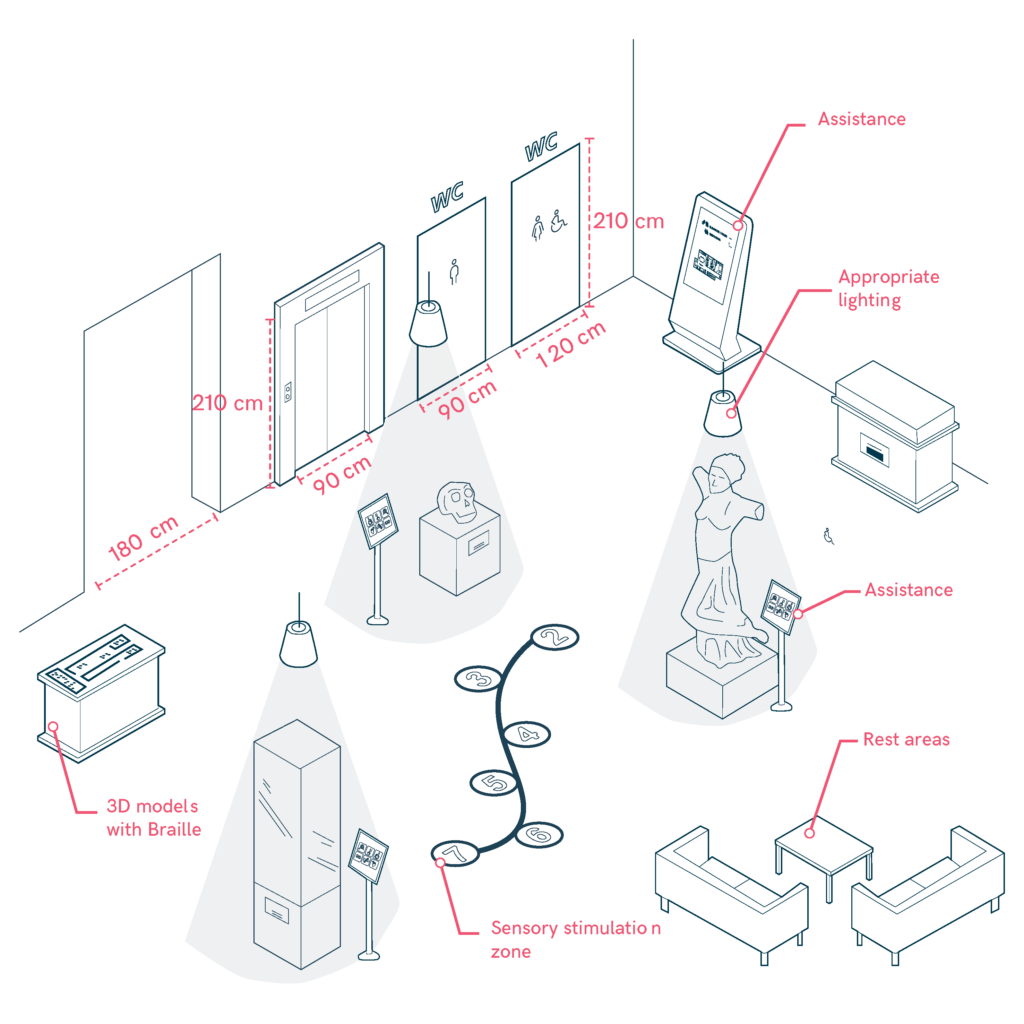Museums and Heritage Sites
Museums and heritage sites should be accessible and inclusive, providing ramps, lifts, and wide corridors to support ease of movement. Exhibitions ought to be adapted with audio guides, subtitles, 3D Braille models, and high-contrast content to accommodate visitors with visual or hearing impairments. It is also essential to consider the diverse needs of children, migrants, and individuals with cognitive disabilities, ensuring that information is accessible to all, both in terms of alternative languages and in clarity and simplicity. Rest areas, sensory stimulation zones, and accessible toilets on every level contribute to an equitable and comfortable experience for all visitors.

- Provide ramps or lifts accessible on all levels of the museum.
- Ensure corridors are wide and free from obstacles to allow easy mobility.
- Install appropriate lighting to prevent glare.
- Adapt exhibitions for people with visual and/or hearing impairments.
- Offer detailed audio guides and screens with subtitles or sign language interpretation.
- Include 3D models with Braille and high-contrast information for people with low vision.
- Curate exhibitions to accommodate diverse needs, such as language barriers for migrants, child-friendly content, and cognitively accessible material.
- Incorporate accessible rest areas with comfortable and varied seating throughout the museum.
- Provide sensory stimulation zones for individuals with diverse attention needs (e.g., those on the autism spectrum).
- Ensure accessible and clearly signposted toilets on every level.
- Implement interactive resources, accessible touchscreens, and audio description applications for different disabilities.
Sources
- https://accessible-eu-centre.ec.europa.eu/content-corner/digital-library/en-172102021-accessibility-and-usability-built-environment-functional-requirements_en
- https://observatoriodelaaccesibilidad.es/wp-content/uploads/2022/05/Guia-de-Accesibilidad-Cognitiva-en-Centros-de-educacion-infantil-y-primaria.pdf
